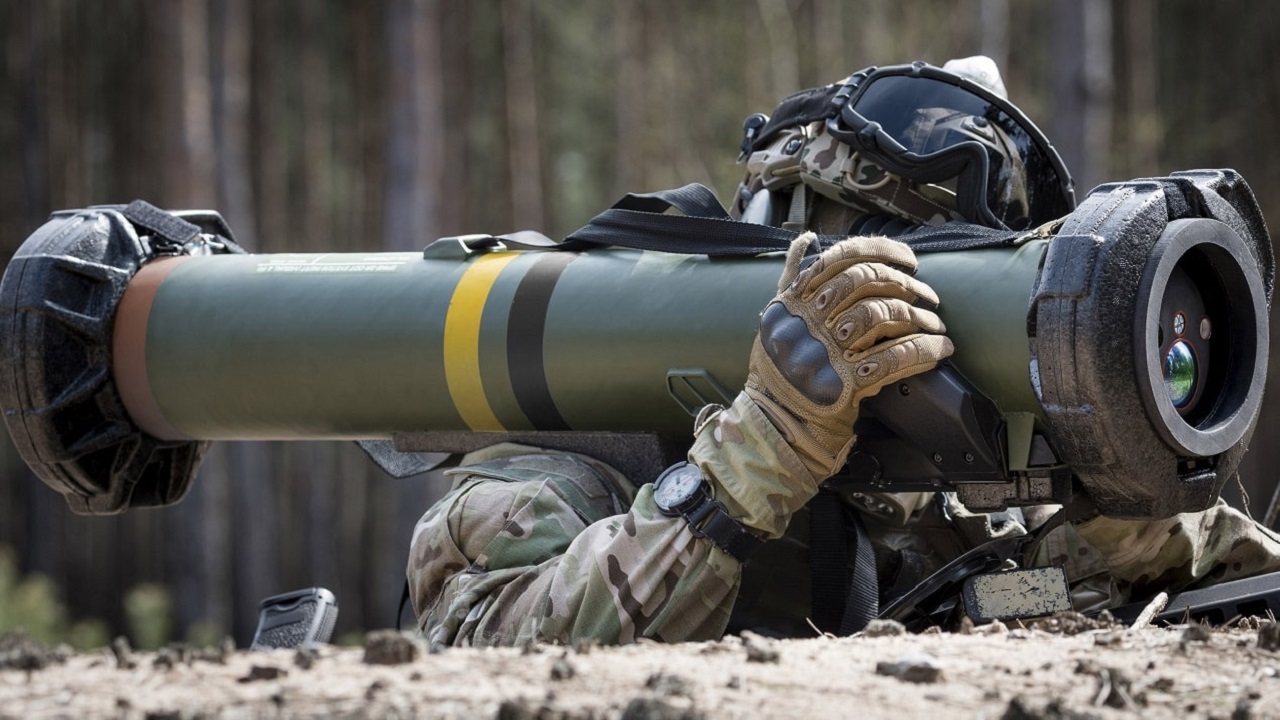Anti-tank-guided missiles (ATGM) have made headlines throughout Russia’s invasion of Ukraine this last year. From the U.S.-made FGM-148 Javelins to the Next-Generation Light Anti-Armor Weapon (NLAW), Ukraine has been able to effectively use its anti-tank weaponry to aid its defensive efforts against Russian Forces.
One formidable missile, however, remains missing from the action in Eastern Europe.
Israel’s Tamuz fire-and-forget “Spike” missile is largely considered to be one of the most lethal anti-tank weapons across the globe today.
In fact, the Spike family of missiles are often referred to as true tank killers. Since the missile first entered service with Israel’s Defense Forces, the weapon has become one of the Jewish state’s most successful exports. Last month alone, Switzerland, Croatia, and Greece all sought out Israel’s most powerful anti-tank missile.
The Origins of the Spike Family of Missiles
Israel’s Armored Corps suffered greatly during the 1973 Yom Kippur War. Syrian and Egyptian troops, sporting over 1,400 up-to-date Soviet main battle tanks (MBTs) outnumbered the IDF’s 180 MBTs that were positioned in Golan when the battle first erupted.
During the early days of the war, over 100 Israeli soldiers were killed, including every company commander of the Barak Brigade 7thArmored Division. At this time, the Israeli Army did not possess the capabilities to strike the advancing Syrian and Egyptian tanks effectively. The IDF was already working on its soon-to-be premier armored vehicle, the Merkava, at this time and used lessons learned from the Yom Kippur War to better equip its upcoming tank to protect crew members.
Following the Yom Kippur War, the IDF knew it needed a weapon capable of accurately striking incoming armored vehicles. This led to the creation of the first Spike missile variant in the 1970s, which had a longer range than a tank’s own shell range. The IDF tasked the Israeli company Rafael Advanced Defense Systems to convert three battalions of the older M48 MBTS to host the new missile, which resulted in the Pere “Savage” vehicle. Disguised with dummy barrels to give the appearance of being an average tank, the Spike-fitted Pere MBTs were well suited to attack enemy vehicles without being detected as missile-carrying tanks.
What Makes the Spike ATGM Special?
The Spike missile sports a tiny fiber-optic cable that connects the missile to the launching system, as well as a camera in the weapon itself. The televised imagery allows the tank’s crew to maneuver the missile toward the target and can also change the missile’s trajectory in flight. The Spike’s missile launcher can also deliver a precise bombardment while remaining roughly 15-30 kilometers away from the target.
Over the years, multiple variants of the Spike missile have emerged, all hosting newer and more advanced capabilities. The Spike missile has been successfully used in Israel’s combat missions, specifically in battles against militants in the Gaza Strip and Iranian-backed Hezbollah fighters in the country’s northern border.
According to Rafael, over 39 other nations have bought over 30,000 missiles since the Spike’s introduction. Although the Spike missile costs around $30,000 more than its American near-peer Javelin, nations are still lining up to procure the formidable ATGM.
In late March, the Croatian parliament’s Defense Committee agreed to procure 30 new Patria armored vehicles in addition to an undisclosed number of Spike LR ATGMs. Greece’s government council on national security and foreign affairs also approved a deal to acquire the Israeli-made anti-tank missile. Even the U.S. wants to use the Spike ATGM for its own airframes.
In February, Lockheed Martin revealed that the Spike NLOS (Non Line-of-Sight) was successfully fired from the Army’s Apache Echo Model V6 helicopter. According to Defense News, Lockheed noted that “integrating the missile into the Apache helicopters highlights the system’s continuing expansion to ensure that the US Army stays ahead of ready in an ever-evolving threat environment.”
The Spike family of missiles could arguably be labeled as Israel’s most successful homegrown weapon. Considering the recent resurgence in ATGM use in Ukraine, Rafael should expect to deliver many more of its advanced anti-tank missiles in the upcoming months.
Maya Carlin, a Senior Editor for 19FortyFive, is an analyst with the Center for Security Policy and a former Anna Sobol Levy Fellow at IDC Herzliya in Israel. She has by-lines in many publications, including The National Interest, Jerusalem Post, and Times of Israel. You can follow her on Twitter: @MayaCarlin.
From 19FortyFive
A Russian Submarine Accidently ‘Destroyed Itself’
Total Massacre’: Ukraine Footage Shows Russian Cruise Missile Shipment Attacked

